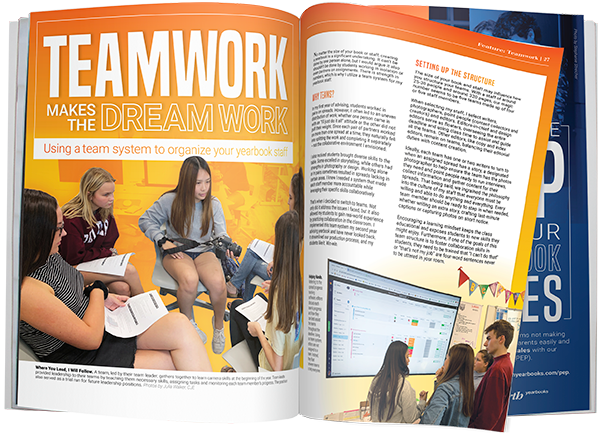No matter the size of your book or staff, creating a yearbook is a significant undertaking. It can’t be done by one person alone, but I would argue it also shouldn’t be done by students working in isolation or even partners on assignments. There is strength in numbers, which is why I utilize a team system for my yearbook staff. …
The holidays are approaching, which at most schools means two weeks off from school. The anticipation is overwhelming – so overwhelming that it can be hard to keep your staff on task to make those December deadlines. So how do you do it? Many yearbook advisers use a mixture of work and fun to keep students focused.
To develop your yearbook editors and managers into leaders, begin in the spring and continue the training and bonding through the summer. A number of processes and resources are available for you to use. This article touches on just a few.
In a yearbook utopia, the new teacher would have a journalism degree, take photos like a pro, be able to manage a group of teenagers with aplomb and truly understand the importance of deadlines in the production of any publication. In reality, though, the yearbook adviser many times has little or no publishing experience and only lasts an average of two years. Following these tips can lead to happier advisers who stick with the job.
An NSPA Best of Show award is a big deal, especially when you produce a middle school yearbook that comes in eighth against other high school yearbooks in the competition. But that’s what happened to the 2012 Scrapbook from Westfield Middle School.
Every fall we return to school with an eagerness to start the new yearbook. As the days turn into weeks and the first deadline approaches, an adviser needs to provide guidance as the staff learns what is required of them as individuals of this team effort.
Keep your staff motivated and feeling good about their work. Do that by telling them and telling others. Reminding them of the good job they are doing will help overcome those challenging times when things are not going right, or a deadline is approaching and there is too much work.
Before the yearbook staff can get down to business creating the yearbook, it’s important to create the right atmosphere in the yearbook room. Developing the right culture will set the proper tone for the year.
When you paint a room, the first thing you do is the prep work. Creating a yearbook is like painting a room. You and your staff need to do the prep work: plan, think what look you want to achieve; and check your tools. Then create. If all of those things have been done, you should have the book you envisioned.
About halfway through my first year teaching yearbook at a small private school in Lawrence, Kan., my students’ motivation was waning. The problem? The staff wanted yearbooks to matter, but they weren’t sure that they did. Enter Hollywood.





